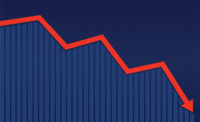Australia's Foodborne Illness Rates Decline... Except Salmonella

A report by the Australian Broadcasting Corporation last week says that foodborne illness rates in Australia are on the decline--except for Salmonella.
From 2000 to 2010, the rate of foodborne illness cases diminished in Australia from 4.3 million to 4.1 million--quite an accomplishment considering how much more convoluted the food supply chain must have become over the course of 10 years.
But the same does not ring true for cases of Salmonella.
According to the U.S. Centers for Disease Control, the cause of Salmonella is many in number, including unsanitary handling of food or improper cooking of raw food items. The bacteria has seen a 50 percent increase in the Australian state of Victoria in the past 3 years, according to Victoria’s Department of Health. In Queensland, Salmonella rates are two times what they were last year.
To help combat this risk, new guidelines have been released by the Fresh Produce Safety Centre Australia New Zealand--an independent nonprofit--to help spread knowledge about proper food safety standards. The organization agreed that a Hepatitis A outbreak caused by frozen berries a few months ago was a preventable outbreak, causing them to focus their education efforts on Australia.
"It made 30 people ill. It could have had significantly greater impact if it wasn't nipped in the bud as it was," says Richard Bennett, technology manager for the Fresh Produce Safety Centre and the Fresh Produce Marketing Australia New Zealand.
One of the biggest lessons the nonprofit hopes to spread is that Salmonella is not just limited to livestock and chickens. Fresh produce is also a high risk. The new guidelines were launched in observance of the Australian Fresh Produce Safety Centre’s first anniversary.
"It is a combination of the best knowledge, experience and research pulled together in one document, applies through the supply chain, from farm to retail, and trans-Tasman, with Australian and New Zealand expertise.”
Their hope--over time--is to make growing and handling food safer for all.
Looking for a reprint of this article?
From high-res PDFs to custom plaques, order your copy today!




